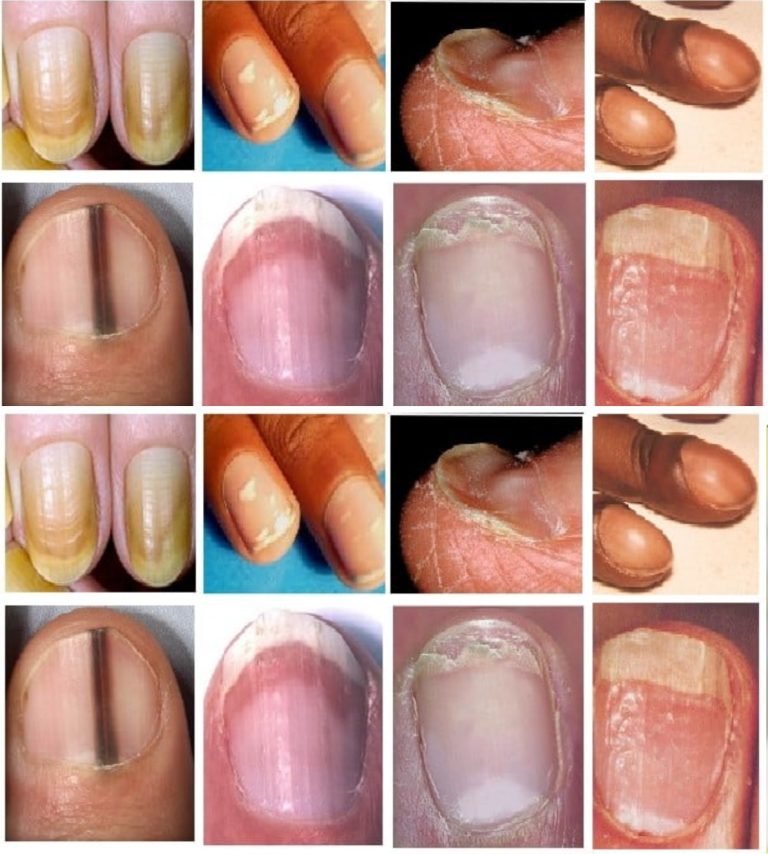Yellow nail syndrome is often a sign of respiratory illness, such as chronic bronchitis. It may also be linked to swelling of the hands (lymphedema). In rare cases, yellow nails may indicate a more serious condition such as a serious thyroid condition, lung disease, diabetes or psoriasis.
Bluish nails
The medical term for blue nails is cyanosis which can be a sign of various disorders and should be investigated. While very cold temperatures can temporarily slow blood flow in the skin causing a bluish color, this color should disappear as soon as you warm up. In Raynaud’s disease, fingers and toes turn white, then blue, and may become numb or painful when exposed to cold. The problem is simply excessive sensitivity of the nerves that control blood flow in the small arteries in the fingers, toes, nose and earlobes.
Green nails
Green nails are the result of a pseudonomas infection, which is usually caused by the environment. This means that those with already weak immune systems are very susceptible to this type of nail infection which often turns the nail greenish.
Small depressions or pitting in the nails are common in people with psoriasis, which is a condition characterized by scaly patches on the skin.
It may also be linked to connective tissue disorders, such as Reiter’s syndrome, alopecia areata, an autoimmune disease that causes hair loss.
Wavy nails
If the surface of the nail is wavy, much like the pitted nails I mentioned above, this may be an early sign of psoriasis or inflammatory arthritis. Discoloration of the nail is also common, and the skin under the nail may have a reddish-brown color.
Split nails
Split or cracked nails are common disease-related nail disorders. Dry, brittle nails that are cracked or broken have frequently been associated with thyroid disease. Cracked nail associated with a yellowish color is likely due to a fungal infection.
Low levels of vitamin C, folic acid, and certain proteins in the diet are also known to cause splitting nails.
Ribbed nails
The ribs can be horizontal or vertical. Vertical veins can mean nutritional problems, dehydration or problems with nutrient assimilation. Horizontal ribs in the nail are often associated with diabetes, liver disease or other chronic illnesses. Both types of ribbing can also be caused by nail damage.
Dark lines under the nail
If you have dark skin, it’s quite common to have streaks of the melanin pigment at the base of your nails. However, you should always have this information checked by your doctor, as it can sometimes indicate a form of skin cancer called subungual melanoma, the most dangerous type of skin cancer. Usually this only affects one nail, and causes the appearance of the line to change, becoming wider or darker over time. Pigmentation can also affect the skin around the nail.
Small brown streaks
These are dark, thin lines under the nail that could be tiny bleeding vessels under the nail. These are known as “threaded hemorrhages” and are not a cause for concern if they are caused by a nail injury. However, if a few nails are affected, it may be a sign that one of the heart valves is infected, a condition called “endocarditis”. These threadlike hemorrhages can also be associated with several other conditions, such as scleroderma, lupus, psoriasis and rheumatoid arthritis.
Pearls or vertical ridge formations
It looks like vertical ridges or ridges, resembling drops of wax from a candle. The beads appear to flow down the nail like wax and this is associated with endocrine or hormonal problems, such as diabetes mellitus, thyroid disorders, Addison’s disease, vitamin B deficiency, changes hormonal or stress.
However, just like with our skin, these “nail lines” are usually caused by aging. They go from the base of the nail to the tip and generally start on one or two nails. Over time, ridges can appear on all nails. Gently filing and polishing them can help smooth them out.
Curved nails

0-Info Weird nails 4-deformities
Bulging nails can be hereditary and may be harmless. However, if they develop all of a sudden, they may be a sign of an underlying medical condition, and due to low oxygen levels in the blood, leading to various illnesses such as lung or heart disease .
Continued on next page
